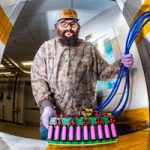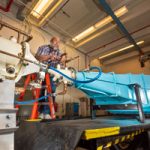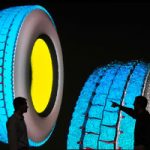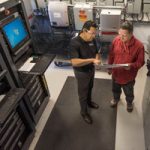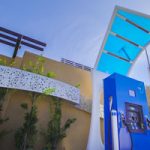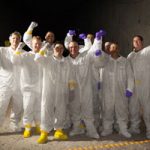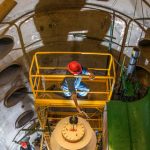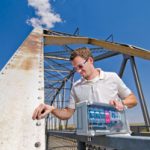Power to spare: New Battery Test Facility boosts work of power sources team, with big benefits for customers
When Sandia tests the performance of high-capacity energy storage devices, the power sources group frequently would hit obstacles that reduced efficiencies and stretched out schedules. Those obstacles have now been removed with the construction of a 7,500 square-foot Battery Test Facility that enables the team to assemble and test batteries more efficiently for customers to validate whether they perform up to expectations.
‘Friendly’ EMP improves survival for electronics
An EMP emitted by a nuclear weapon exploded high above the U.S. could disable the electronic circuits of many devices vital to military defense and modern living. Fortunately, military equipment is designed to be immune to various levels of EMP, and the validity of those designs has been tested and improved by a “friendly” EMP generator at Sandia.
CRADA boom spurs innovation, collaboration with Sandia Labs
Sandia signed 42 CRADAs in fiscal year 2018, more Cooperative Research and Development Agreements than in any previous year this century, sparking dozens of new collaborations and potential technological innovations. A CRADA is an agreement between a government agency and a nonfederal entity to work together on research and development.
CRADA enables resilient microgrid research between Sandia, Emera Technologies
Sandia and Emera Technologies have signed an 18-month Cooperative Research and Development Agreement to work on microgrids, small-scale versions of interconnected electric grids that locally manage energy storage and resources such as solar, wind and thermal systems, and which may connect to a larger host grid.
Some like it cryogenic
Sandia helped design the first generation of fueling stations for hydrogen-powered cars to be as safe as conventional gas stations. Now, a Sandia team is working to do the same for the next generation of hydrogen stations.
Majority rules when looking for earthquakes, explosions
Finding the ideal settings for each sensor in a network to detect seismic activity can be a painstaking and manual process. Sandia researchers are working to change that. They have developed an algorithm that automatically adjusts seismic activity detection levels for each network sensor, tuning out everyday vibrations such as traffic or footsteps to better detect earthquakes and explosions.
Keeping perspective during a long recovery
Sean Dunagan knows firsthand how to bring a major project back online after a three-year shutdown. Following the February 2014 events that closed the Waste Isolation Pilot Plant in Carlsbad, New Mexico, he was the senior WIPP recovery manager at DOE. Now back in Sandia’s employ, Sean manages special projects and remote site support for the Labs’ Carlsbad office.
Dry casks take the heat
Sandia researchers have built a scaled test assembly that mimics a dry cask storage container for spent nuclear fuel to study how fuel temperatures change during storage and how the fuel’s peak temperatures affect the integrity of the metal cladding surrounding the spent fuel.
Cooking composites in the sun
Sandia’s solar tower is helping to assess how extreme temperature changes affect materials. The tests for the Air Force take advantage of the ability of Sandia’s National Solar Thermal Test Facility to simulate a very rapid increase in temperature followed by an equally rapid decrease.
Smarter, safer bridges with Sandia sensors
Sandia and UK-based Structural Monitoring Systems PLC have been working together for 15 years to create transportation systems that can send a signal when they're damaged. They've outfitted a U.S. bridge with a network of sensors that will alert maintenance engineers when they detect a crack large enough to require repair.
